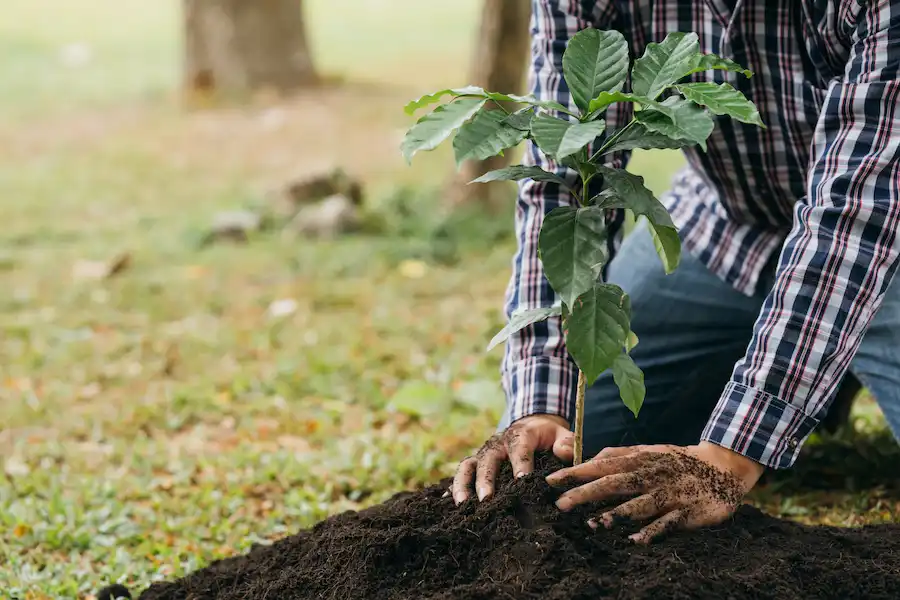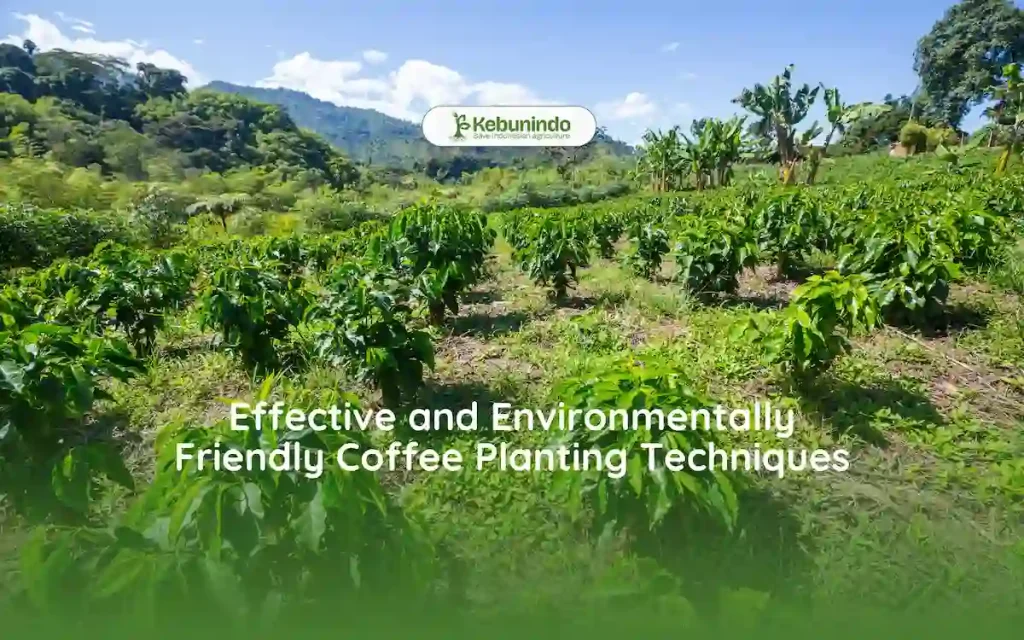Planting coffee is not just about placing seeds in the ground, but involves a series of careful preparations and techniques to ensure the plant grows optimally and produces high-quality beans.
By implementing the right measures, farmers can not only increase productivity, but also ensure the sustainability of coffee farming for the future. This section will discuss in detail the important stages in growing coffee, here are the steps you need to pay attention to:
Planting Hole Preparation
1. Size and Shape
The planting hole is made in the shape of a trapezoid with dimensions of 60 cm x 60 cm x 40 cm. The location is determined based on the stakes that have been installed according to the desired planting distance.
2. Creation Time
The planting hole should be made six months before the planting process to ensure the soil is mature.
3. Excavated Soil Management
Separate the top and bottom layers of mineral soil. Place the top layer soil on the left side and the bottom layer soil on the right side of the hole.
4. Planting Hole Preparation
Three months before planting, cover two-thirds of the hole with topsoil mixed with organic materials such as manure or compost. After that, put the stake back in the middle of the hole as a marker.
Planting Stages

1. Condition of Shade Trees
Make sure the shade tree has grown well with the light intensity passed on to the plant around 30-50% of direct light.
2. Seed Selection
Use high quality seeds that are ready to distribute, with the criteria being to have 6-8 pairs of normal leaves and one pair of primary branches. Seeds must be healthy and firm.
3. Planting Time
Plant at the start of the rainy season to make maximum use of soil moisture. Avoid planting during sweltering hot weather.
4. Hole Preparation Before Planting
Before planting the seeds, compact the planting hole again, then hoe the soil to a depth of about 30 cm.
5. Root and Polybag Adjustment
Cut off any tap roots that are too long. If the seeds are in a polybag, cut the bottom of the polybag about 2-3 cm.
6. Planting Process
Plant the seeds up to the root collar. Compact the soil around it, then tear the polybag carefully using a machete or sickle, and pull it out.
7. Hole Closure
Cover the planting hole so that it forms a convex surface to prevent standing water which can damage the roots.
8. Dead Plant Embroidery
During the rainy season, replant to replace dead plants so that the plant population remains optimal.




